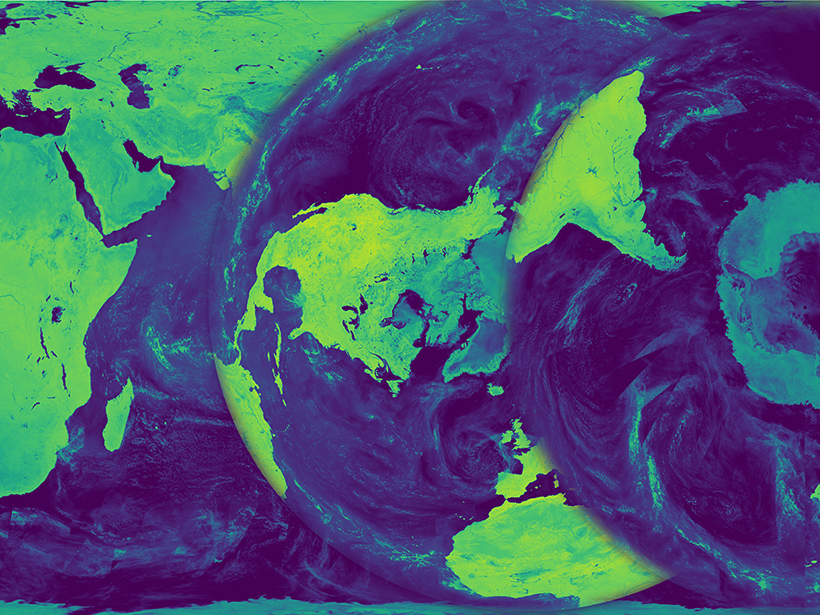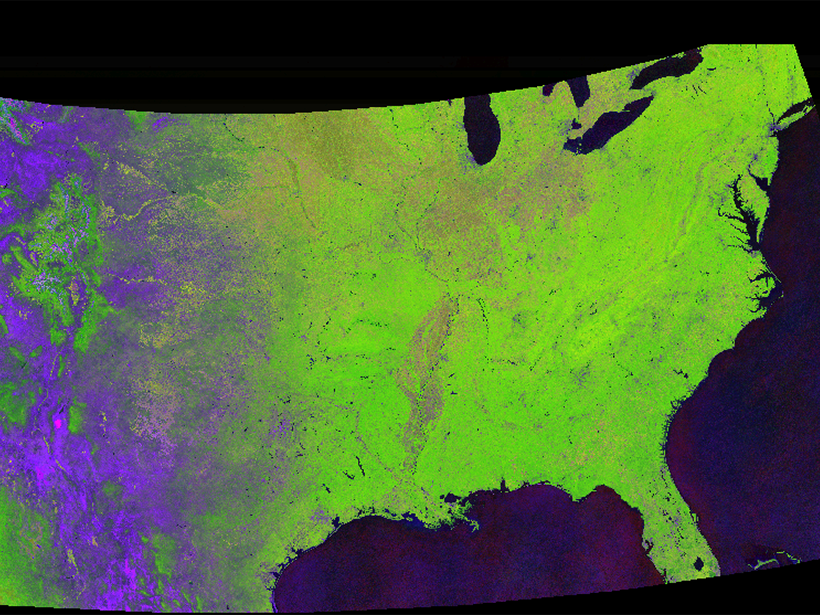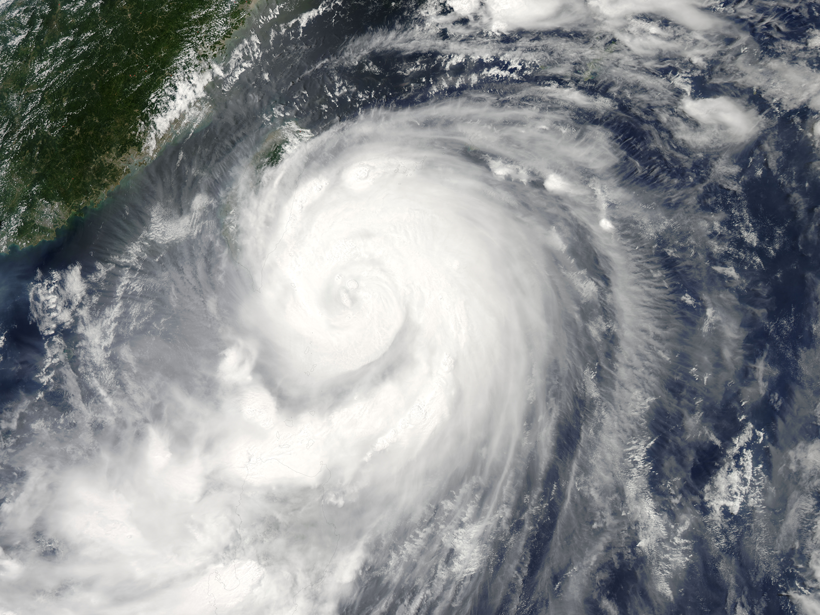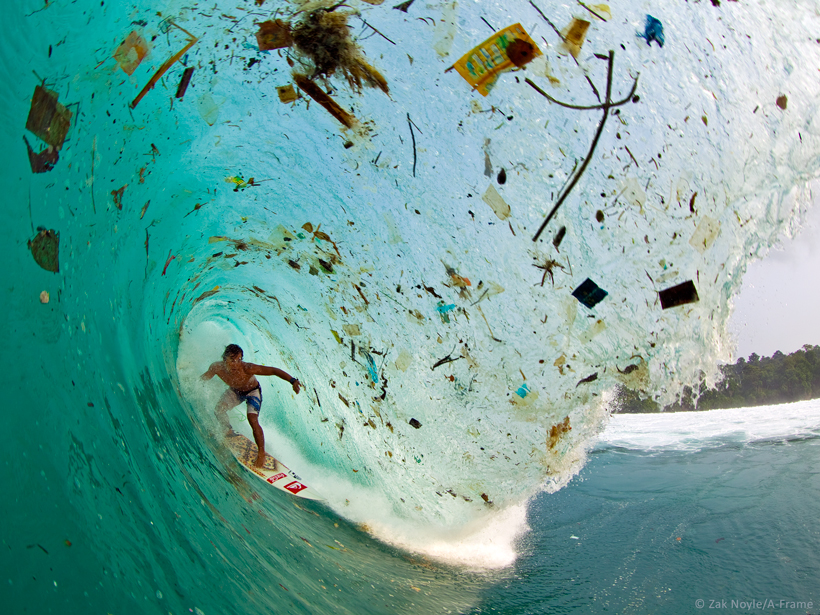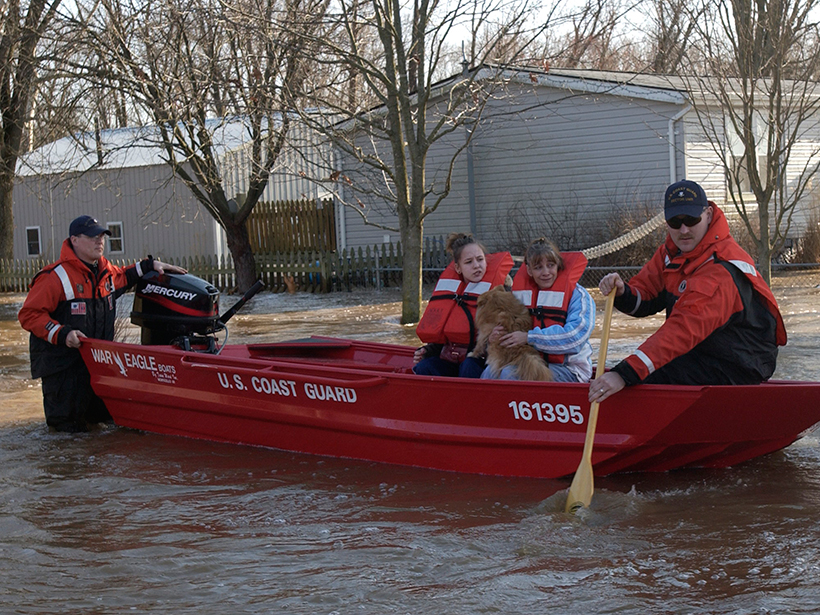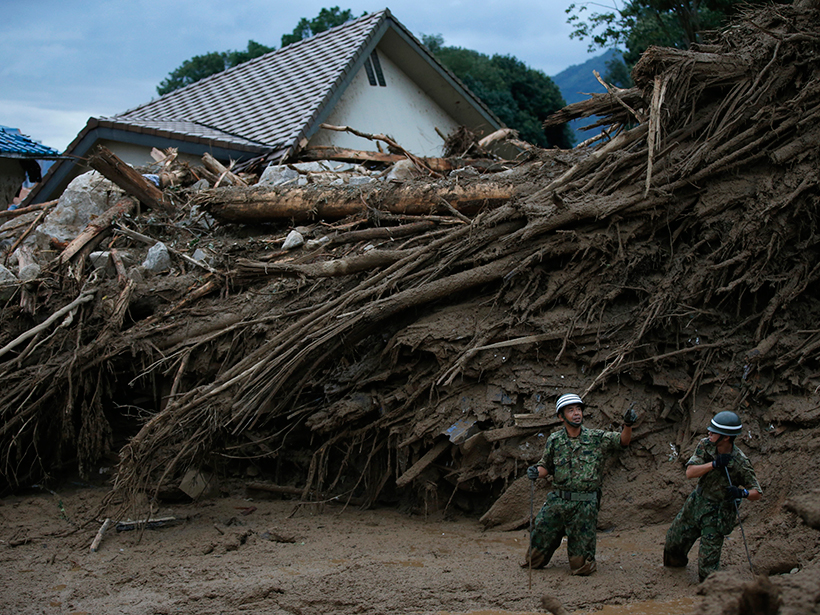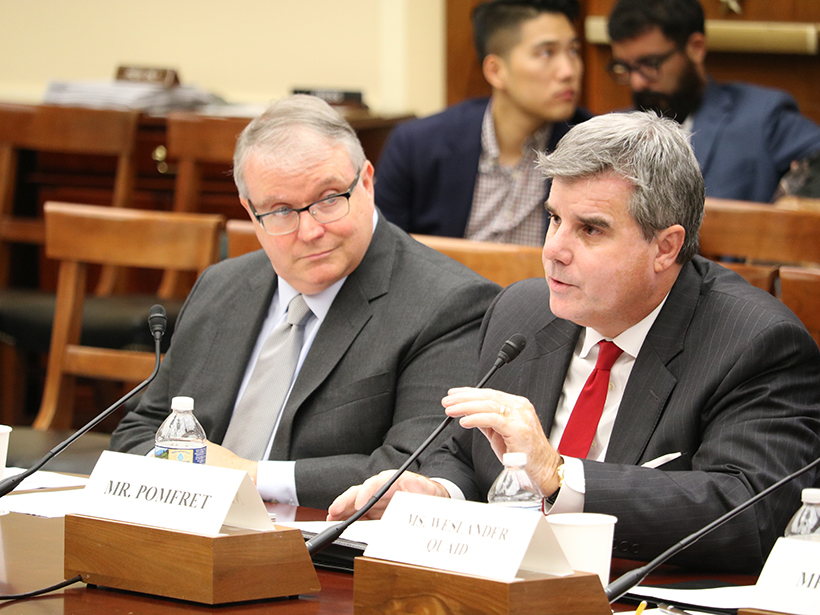New processing capabilities improve the spatial resolution of satellite microwave data, enabling scientists to analyze trends in coastal regions and marginal ice zones.
remote sensing
Tracking Global Change with a Cloud-Based Living Atlas
With their feet in the cloud, Descartes Labs is pushing the limit of how we study the Earth with satellite images.
Reading Raindrops: Microphysics in Typhoon Matmo
Quantitative predictions about tropical storms require an understanding of even their smallest physical processes. A new study observes unusual microphysics in 2014's Typhoon Matmo.
First of Next Generation of U.S. Weather Satellites Hits the Sky
The novel spacecraft and three sister satellites to follow are expected to vastly improve storm forecasting.
Gulf Stream Destabilization Point Is on the Move
Westward migration of the wavelike Gulf Stream pattern could have big effects on ocean mixing and heat transport off the U.S. East Coast.
Developing a Remote Sensing System to Track Marine Debris
Workshop on Mission Concepts for Marine Debris Sensing; Honolulu, Hawaii, 19–21 January 2016
Online Tracking of Ships Fights Illegal Fishing Worldwide
The system currently follows and records the movements of more than 35,000 large fishing vessels globally to bring transparency to commercial fishing activities.
Flood Response Using Earth Observation Data and Products
NASA Flood Response Workshop; Greenbelt, Maryland, 14–16 June 2016
Tracking Landslide Hazards Around the World, Pixel by Pixel
Combining satellite precipitation measurements and remotely sensed environmental data, a new system aims to improve landslide awareness and preparedness in all corners of the globe.
Remote Sensing Regulations Come Under Congressional Scrutiny
Republicans accused the administration of dragging its feet on recommending policy revisions. A federal advisory committee has a November deadline to provide recommendations.

